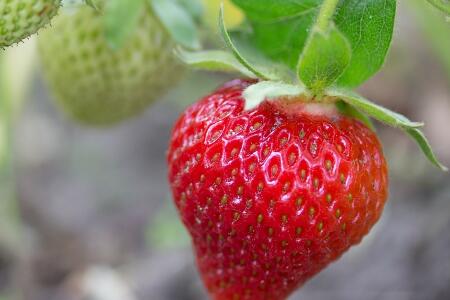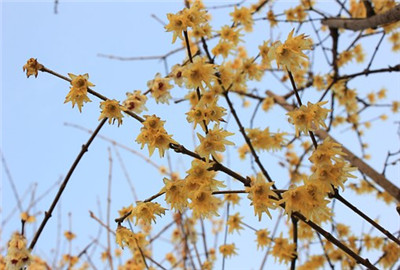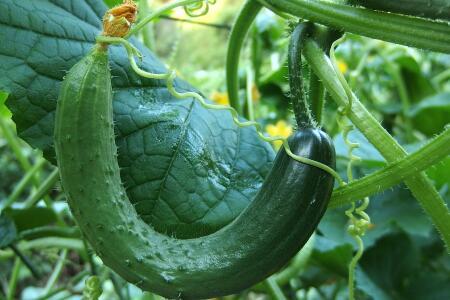What if the leaves of strawberries, blueberries, watermelons and cantaloupes turn yellow? What is the cause?
Strawberries, blueberries, watermelons and cantaloupes are prone to yellowing leaves during their growth. Do you know what causes them? What should I do? In fact, the biology textbooks of junior high school have introduced the role of various nutrient elements that affect plant growth. The yellowing of green plant leaves is mainly caused by the lack of nutrient elements.

What if the strawberry leaves turn yellow?
1. The gap between dry and wet is too large, the leaves first wither and then turn yellow after the plant is not watered for a long time, and then turn yellow after being suddenly watered for a long time, such as a large amount of water.
The right thing to do: strawberry watering should imitate nature with sunshine and rain (no dry, no watering), remember to water moderately.
two。 The change of ambient temperature is caused by the yellowing of leaves caused by the sudden transfer to the air-conditioned tuyere in the greenhouse. The lack of sunlight will not only affect the photosynthesis of strawberries, but also lead to the reduction of leaf evaporation and the disturbance of plant cycle.
The right thing to do: put it in a leeward and sunny place to grow.
3. Yellowing and leaf loss caused by lack of trace elements or excessive fertilization.
The right thing to do: if the light and watering are normal, the yellow leaves are caused by lack of fertilizer, apply some fermented rice washing water or evenly apply 20 grains of compound fertilizer under the basin edge soil every month.
4. Yellowing of leaves caused by metabolism and diseases, but not in large areas.
The right thing to do: if you plant strawberries in a large area, you should first get rid of weeds and underground pests. It can be sprayed with 1000 times of phoxim EC (5-6 cm wet soil layer) to control grubs, mole crickets and ground tigers. If you grow your own, remember to trim the residual leaves regularly or use pesticides properly.
What if the blueberry leaves turn yellow?
1. Soil moisture continued to be too high, resulting in serious anaerobic respiration of roots, and finally blueberry capillary root necrosis, which could not normally transport water and nutrients to plants, thus hindering chlorophyll synthesis and causing leaf yellowing.
Improvement measures:
The main results are as follows: (1) controlling the amount of irrigation and keeping the soil moisture between 18-22%.
(2) pay attention to drainage in the rainy season, especially in low-lying or water-prone plots. Blueberry planting plots should not accumulate water for more than 24 hours, otherwise the plants may not be able to return to normal growth forever.
two。 The physical structure of the soil is poor, the surface is easy to harden or the water retention is poor after watering, the water after watering can not penetrate into the soil layer or evaporate quickly, so that most of the roots can not absorb enough water and nutrients, resulting in the loss of water and nutrition of leaves and the symptoms of yellow leaves.
Improvement measures:
The main results are as follows: (1) to improve the soil and increase the content of organic matter, it is best to be between 40 and 60%. If there are conditions, the overall improvement can be carried out. In order to save cost, only hole modification can be used.
(2) when the soil is changed, the soil for planting blueberry requires PH4.5-5.5. sandy loam is better, and the soil has good air permeability and water holding capacity, which is beneficial to root growth.
(3) increasing the cover of surface organic matter, on the one hand, the soil surface covered with organic matter can reduce water evaporation, on the other hand, the continuous decomposition of organic matter is beneficial to improve the soil surface structure and promote root growth.
3. Diseases and insect pests are also easy to cause yellow leaf phenomenon, such as aphids, rust, underground pest grubs eating roots and so on, which can lead to different degrees of leaf chlorosis.
Improvement measures:
(1) the harm of aphids can be sprayed with cypermethrin or imidacloprid, and rust can be sprayed with mancozeb or stone-sulfur mixture.
(2) the underground pest grub can be applied chlorpyrifos or phoxim particles around the roots of blueberry plants in spring and summer, or directly irrigated with liquid EC and water.
4. Element deficiency leads to yellow leaves, which is usually caused by iron deficiency.
Improvement measures:
The chlorosis of leaves can be improved by applying ferrous sulfate or chelate iron according to a certain proportion and interval.
What if the watermelon leaves turn yellow?
1. Yellow leaves caused by improper fertilization
As a result of the use of immature human and animal manure, or the long-term use of a large number of chemical fertilizers, resulting in fertilizer burning roots. Some use too much inferior foliar fertilizer, because many foliar fertilizers on the market contain hormone substances, resulting in watermelon hormone and micro-fertilizer poisoning, making leaves ossified, chlorotic, brittle, deformed and yellowed.
Prevention and control methods: it is strictly forbidden to use unmature human and animal manure, chicken and cow manure must be fully fermented in advance before it can be used, chemical fertilizer should be used, it is best to adopt formula fertilization, appropriate application of phosphorus and potassium fertilizer, and when applying base fertilizer, nitrogen fertilizer should not be used too much to prevent leaf yellowing.
two。 Yellow leaves caused by lack of elements
In recent years, due to the good planting benefit of watermelon, the phenomenon of continuous cropping of watermelon is more prominent, which is easy to cause lack of elements. The more common watermelons are potassium deficiency, calcium deficiency and boron deficiency, which are easy to cause different degrees of yellow leaves of watermelon.
Prevention and control methods:
(1) avoid continuous cropping as far as possible.
(2) for continuous cropping watermelon, while using nitrogen, phosphorus and potassium fertilizer, a bag of Shi Guangxing Dibao can be added per mu to recuperate the soil, activate various trace elements solidified in the soil, and indirectly supplement the deficiency of trace elements; for watermelon seedlings with symptoms of element deficiency, 800-fold solution of iodine boron potassium can be sprayed, which has obvious effect on preventing the symptoms of element deficiency in watermelon.
3. Yellow leaves caused by diseases and insect pests
The main results are as follows: (1) Red spider; the adults and larvae of red spiders will concentrate on the back of young leaves to suck leaf sap, especially the undeveloped buds, young leaves and flower buds are the main damage parts, so that watermelon leaves can not grow normally. The leaves sucked by red spiders lose their greenness and turn yellow, which can dry up when they are serious.
Control method: root out the weeds around the watermelon field (shed) and cut off the insect source. The red spider has a short life cycle and strong fecundity, so attention should be paid to early prevention and control. The foliar spray control can be carried out by adding 800 times of iodine boron potassium with 1.8% mikexin 2000 times solution or 2% avermectin 1500 color 2000 times solution.
(2) downy mildew; watermelon downy mildew is easy to occur in the middle and later stage of watermelon plant growth, the disease mainly harms the leaves, at first, the leaves appear water-immersed light green spots, and then gradually turn yellow, mainly because the cultivation is not ventilated, neglecting the application of inorganic fertilizer.
Prevention and control methods:
The main results are as follows: (1) watering should be properly controlled in the early stage of the disease, and cultivation in protected areas should pay attention to enhance ventilation and reduce air humidity.
(2) cultivate disease-free and strong seedlings, increase the application of organic base fertilizer, and pay attention to the rational collocation of nitrogen, phosphorus and potassium fertilizer.
(3) thoroughly remove the fallen leaves of diseased plants after harvest.
4. Lack of light leads to yellow leaves.
If the planting is too dense, poor ventilation, or poor ventilation in protected areas, watermelons grow poorly in low-lying areas, which will also cause watermelon leaves to turn yellow.
Control methods: under the condition of ensuring the temperature of the seedlings, open the window as far as possible to make it ventilated and reduce the ammonia in the greenhouse.
5. Yellow leaves caused by too much watering
Watermelons are watered differently from other plants, but some farmers do not know that once a day, the soil will be too wet over time, resulting in serious yellow leaves and rotten roots. After entering the flowering and fruiting stage, watermelon is more sensitive to water. If the water supply is insufficient at this stage, the ovary of the female flower is smaller and stunted.
Prevention and control methods: reasonable watering according to the water demand characteristics of watermelon is the guarantee of early ripening and high yield of watermelon. Watermelon needs less water at seedling stage, so measures are generally taken to control water squatting seedlings to promote root rooting and health. In order to keep the soil dry and wet, the principle of "promoting and controlling" should be grasped in the water management of watermelon during the spreading period. After the watermelon enters the flowering and fruiting stage. Therefore, it is appropriate to keep the soil moist in this period. Watermelon expansion period is a period when more water is needed, so the amount of water should be increased to keep the soil moist.
What if the cantaloupe leaves turn yellow?
1. Dry yellow
The yellow with lack of water is different from the yellow with more water, the yellow with lack of water is withered and dry at the tip or edge of the leaf, and the old leaves wither and fall off from the bottom up, but the growth of the new leaves is relatively normal. Pay attention to watering enough and thoroughly.
two。 Lack of fat yellow
The performance is that the color of the young leaves becomes lighter, showing yellow or light green, while the old leaves are more normal or gradually change from green to yellow. To often check the basin soil if there is a dry knot phenomenon should change the soil, usually apply thin fertilizer frequently and timely pour some alum water to supplement iron.
3. Lack of light and yellow
Put in shade environment for a long time, the leaves can not get enough sunlight, can not form chlorophyll, the whole leaves turn yellow and then fall off, supplementary light can avoid the disease.
4. Fat yellow
The yellowing of flowers caused by excessive fertilization or excessive concentration is shown in the dry brown on the tip of the new leaves, the leaves are generally thick and without luster, and the concave and convex are not stretched, and the old leaves are scorched yellow and fall off. Fertilizer should be stopped immediately and some fertilizers should be washed with a large amount of washing.
5. Burning yellow
Strong sunlight shines directly on some shade-loving flowers (such as hanging orchids, hairpins, etc.), which can easily lead to withered leaf tips and leaf edges, and macular spots in the sunny part of the leaves. Just move to the shade.
6. Water yellow
The young leaves were dark yellow and dull, the old leaves had no obvious change, the branches were small yellow-green, and the new shoots shrunk not long, indicating that they were overwatered. Remove the flowers from the pot and place them in a ventilated, cool, self-drying soil mass and then put them back into the basin.
Time: 2019-04-11 Click:
- Prev

How to raise the plum blossom? Can its fruit be eaten?
Wax plum, deciduous shrubs, often clump, wax plum blooming in the depths of winter, fighting cold frost, showing the character of the Chinese nation that will never yield in the face of rape, giving people spiritual enlightenment and the enjoyment of beauty. It is not only suitable for courtyard planting, but also suitable for ancient pile bonsai, flower arrangement and plastic arts.
- Next

Symptoms and control methods of cucumber aphids and root nematodes (root knot nematodes)!
Cucumber, a widely cultivated annual trailing or climbing herb of Cucurbitaceae, is very prone to aphids and root nematodes in its growth process. Here are the symptoms and control methods of these two pests. Symptoms and control methods of aphids main symptoms: aphids are also called greasy insects
Related
- Fuxing push coffee new agricultural production and marketing class: lack of small-scale processing plants
- Jujube rice field leisure farm deep ploughing Yilan for five years to create a space for organic food and play
- Nongyu Farm-A trial of organic papaya for brave women with advanced technology
- Four points for attention in the prevention and control of diseases and insect pests of edible fungi
- How to add nutrient solution to Edible Fungi
- Is there any good way to control edible fungus mites?
- Open Inoculation Technology of Edible Fungi
- Is there any clever way to use fertilizer for edible fungus in winter?
- What agents are used to kill the pathogens of edible fungi in the mushroom shed?
- Rapid drying of Edible Fungi

